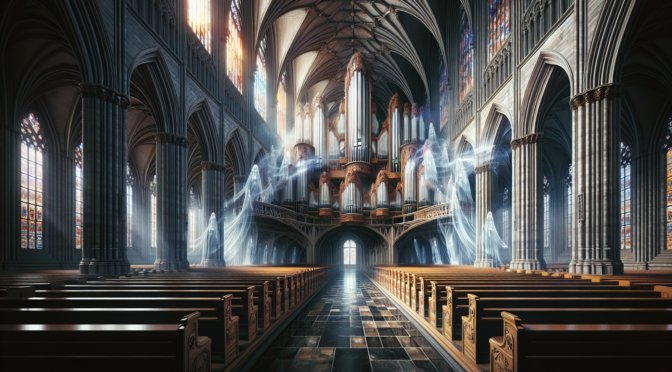In a recent article, the Seattle Times brought to light a challenging reality – church attendance in the Seattle metropolitan area is lower than in any other part of the country. This trend is alarming beyond spiritual considerations; it threatens a major pillar of our cultural heritage – the organ and its majestic soundscapes.
Indeed, most organs are housed in churches, and if the hallowed pews remain unoccupied, so too do the resonant chambers of these magnificent instruments. Our music, which once filled sanctuaries with ethereal harmonies and profound echoes, now often falls silent. In instances where music does fill a church, it is more often accompanied by the strumming of guitars and beating of drums – a dramatic and deplorable departure from the sophistication and sublimity of organ music.
It is essential for us to understand and address this: the survival of the organ as an instrument is inextricably tied to the context within which it is played. We must strive to assert the organ’s independence and equate it not merely with religion but with its intrinsic musical value, its power to captivate, and its capacity to elicit emotion.
There exist several avenues by which we can catalyze this transition. A primary tool in our arsenal is education. By organizing educational events, particularly targeted at the fertile minds of children, we can engender an appreciation for organ music at a young age. Think “a day at the opera”, only it’s “bring your children to see how an organ works.”
Additionally, aligning organ events with secular observances such as Halloween and July 4th, and arguably Christmas, could imbue these occasions with a classical touch, increasing the visibility and broad appeal of organ music.
Casual gatherings such as “Bring a bag lunch and enjoy 30 minutes of compelling organ music” could also provide a setting that makes organ music more accessible and enticing to the public.
Local chapters of the American Guild of Organists are far from impotent in this regard – in fact, we are key to ensuring a vibrant future for the organ. By actively working to boost the visibility and appeal of organ music, we can stimulate interest and develop a lasting appreciation for this magnificent instrument.
Let’s harness our potential and make a concerted effort toward revitalizing the role of the organ, not only within the hallowed confines of places of worship but also in the wider world of music and cultural events. This will surely contribute to ensuring the organ’s continued relevance and survival. The future of the organ is in our hands, let’s play it right!

